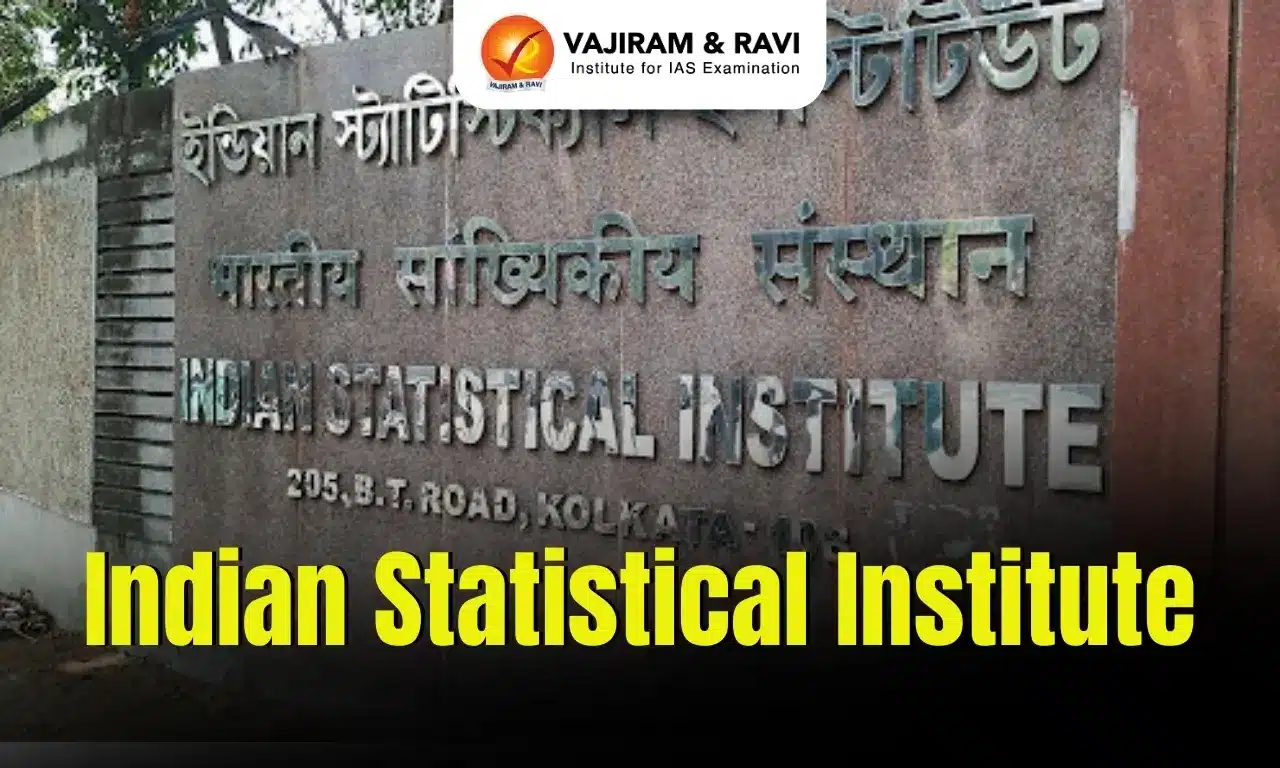What’s in today’s article?
- Why in News?
- What is National Institute Ranking Framework (NIRF)?
- Key highlights of NIRF 2024
- Key points about the National Institutional Ranking Framework
- How Does the NIRF Rank Institutes?
- What are Bibliometrics?
- What is the Issue with Over Relying on Bibliometrics?
- What is the Difference Between NAC Accreditation and NIRF Rankings?
Why in News?
Recently, the Union Minister for Education released the India Rankings 2024, which implements the National Institutional Ranking Framework (NIRF) drafted for this purpose by the Ministry of Education in 2015.
What is National Institute Ranking Framework (NIRF)?
- The National Institutional Ranking Framework is a methodology adopted by the Ministry of Education, to rank institutions of higher education in India.
- In July 2022, the Ministry released the 7th edition of NIRF.
Key highlights of NIRF 2024:
- Indian Institute of Technology Madras retains its 1st position in Overall Category for the sixth consecutive year, i.e. 2019 to 2024 and in Engineering for 9th consecutive year, , i.e. from 2016 to 2024.
- Indian Institute of Science, Bengaluru tops the Universities Category for ninth consecutive year, i.e. from 2016 to 2024. It stood first in the Research Institutions Category for the fourth consecutive year, i.e. from 2021 to 2024.
- IIM Ahmedabad tops in Management subject retaining its first position for fifth consecutive year, i.e. from 2020 to 2024.
- All India Institute of Medical Sciences (AIIMS), New Delhi occupies the top slot in Medical for the seventh consecutive year, i.e. from 2018 to 2024.
- Jamia Hamdard, New Delhi tops the ranking in Pharmacy this year.
- National Law School of India University, Bengaluru retains its first position in Law.
Key points about the National Institutional Ranking Framework
- It was launched in November 2015 by the Ministry of Education.
- Five broad categories of parameters identified in the NIRF and their weightage on scale of 10 are: Teaching,Learning & Resources , Research and Professional Practice, Graduation Outcome, Outreach and Inclusivity, Perception
- Four distinct additions to 2024 edition of India Rankings are as follows:
- Introduction of three new categories namely State Public Universities, Open Universities, and Skill Universities; and
- Integration of “Innovation” ranking into the India Rankings using NIRF framework.
- With the addition of three categories, i.e. Open Universities, State Public Universities and Skill Universities, the existing portfolio of India Rankings has increased to 16 categories and subject domains that have been ranked in India Rankings 2024.
How Does the NIRF Rank Institutes?
- Currently, the NIRF releases rankings across various categories: ‘Overall’, ‘Research Institutions’, ‘Universities’, and ‘Colleges’, and specific disciplines like engineering, management, pharmacy, law, etc.
- The ranking framework judges these educational institutions under five broad generic groups of parameters of –
- Teaching, Learning and Resources (TLR) (30% weightage),
- Research and Professional Practice (RP) (30% weightage),
- Graduation Outcomes (GO) (20% weightage),
- Outreach and Inclusivity (OI) (10% weightage) and
- Perception (PR) (10% weightage).
- Academic communities have had concerns about the construction of these indicators, the transparency of the methods used, and the overall framework.
- An important part of it is focused on the research and professional practices part of the evaluation because they pay a lot of attention to bibliometric measures.
What are Bibliometrics?
- Bibliometrics refers to the measurable aspects of research, such as the number of papers published, the number of times they’re cited, the impact factors of journals, etc.
- The allure of bibliometrics as a tool for assessing research output lies in its efficiency and convenience compared to qualitative assessments performed by subject experts.
- Science policy experts have repeatedly cautioned authorities against relying too much on bibliometrics as a complete assessment in and of itself.
- They have argued that bibliometric indicators don’t fully capture the intricacies of scientific performance.
- The journal Science recently reported that a dental college in Chennai was using “nasty self-citation practices on an industrial scale” to inflate its rankings.
- The report spotlighted the use of bibliometric parameters to understand the research impact of institutions as well as the risk of a metric becoming the target.
What is the Issue with Over Relying on Bibliometrics?
- The NIRF uses commercial databases, such as ‘Scopus’ and ‘Web of Science’, to get bibliometric data.
- But these entities are often works in progress, and prone to inaccuracies or misuse.
- Recently, for example, ‘Web of Science’ had to delist around 50 journals, including a flagship journal of the publisher MDPI.
- Similarly, the NIRF’s publication-metrics indicator solely considers research articles, side-lining other forms of intellectual contributions.
- As a result, the NIRF passive encourages researchers to focus on work that is likelier to be published in journals, especially international journals.
- This in turn deprivileges work that focuses on national or more local issues, because international journals prefer work on topics of global significance.
What is the Difference Between NAC Accreditation and NIRF Rankings?
- Accreditation is a comprehensive assessment that takes place as a one-time (5 year) event.
- In India, Accreditation is carried out by the National Assessment and Accreditation Council (NAAC).
- NAAC is an autonomous body registered under the Karnataka Societies Registration Act of 1960.
- Ranking on the other hand is a yearly event that occurs every year without fail (since 2015).
- Despite both being an assessor of educational institutes, both have considerable differences in terms of specific criteria, metrics used to prepare the qualitative and quantitative reports.
- Chairman of the NAAC’s executive committee has said that there are some discrepancies in the scores and current system needs to be reviewed and improved upon.
Q1) What is the mandate of the University Grants Commission (UGC)?
Determining and maintaining standards of teaching, examination and research in universities. Framing regulations on minimum standards of education. Monitoring developments in the field of collegiate and university education; disbursing grants to the universities and colleges.
Q2) When was the first National Education Policy announced in India?
The first National Education Policy came in 1968.
Source: Explained | Is the National Institutional Ranking Framework flawed?
Last updated on November, 2025
→ Check out the latest UPSC Syllabus 2026 here.
→ Join Vajiram & Ravi’s Interview Guidance Programme for expert help to crack your final UPSC stage.
→ UPSC Mains Result 2025 is now out.
→ UPSC Notification 2026 is scheduled to be released on January 14, 2026.
→ UPSC Calendar 2026 is released on 15th May, 2025.
→ The UPSC Vacancy 2025 were released 1129, out of which 979 were for UPSC CSE and remaining 150 are for UPSC IFoS.
→ UPSC Prelims 2026 will be conducted on 24th May, 2026 & UPSC Mains 2026 will be conducted on 21st August 2026.
→ The UPSC Selection Process is of 3 stages-Prelims, Mains and Interview.
→ UPSC Result 2024 is released with latest UPSC Marksheet 2024. Check Now!
→ UPSC Prelims Result 2025 is out now for the CSE held on 25 May 2025.
→ UPSC Toppers List 2024 is released now. Shakti Dubey is UPSC AIR 1 2024 Topper.
→ UPSC Prelims Question Paper 2025 and Unofficial Prelims Answer Key 2025 are available now.
→ UPSC Mains Question Paper 2025 is out for Essay, GS 1, 2, 3 & GS 4.
→ UPSC Mains Indian Language Question Paper 2025 is now out.
→ UPSC Mains Optional Question Paper 2025 is now out.
→ Also check Best IAS Coaching in Delhi

















